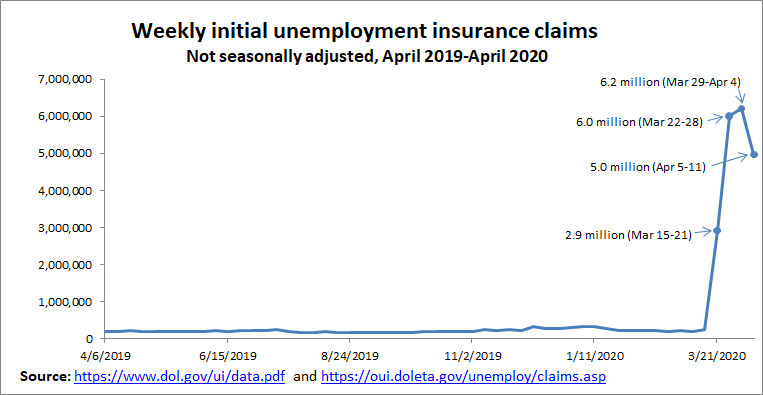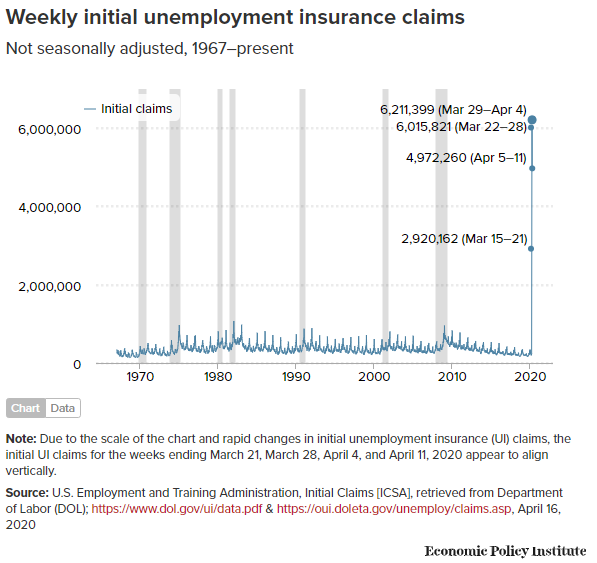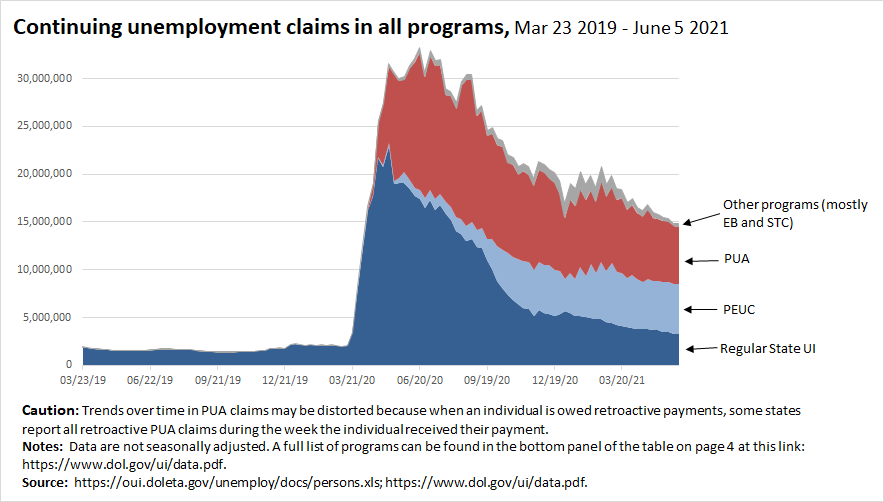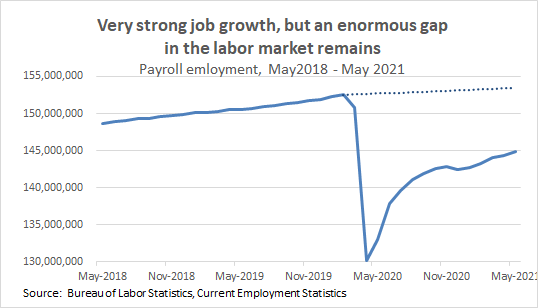
HOLY HELL. In the last four weeks, more than 20 million workers applied for unemployment insurance. 1/ 

DOL reports 2 figures for workers who applied for UI in the last 4 weeks, 22.0 mil (seasonally adjusted) and 20.1 mil (not seasonally adjusted). The way DOL does seasonal adjustments is weird right now, so I use the unadjusted numbers b/c that’s the actual number of claims. 2/
But for good measure, here’s the seasonally adjusted chart, showing 22.0 million people applied for unemployment insurance over the last four weeks. 3/ 

The (not-seasonally-adjusted) 20.1 million unemployment insurance claims filed in the last four weeks works out to almost three-quarters of a million claims EVERY DAY. It’s more than a 2200% increase over the pre-virus period. 4/
What share of workers who applied for UI in this pandemic are actually getting benefits? The data to get at that are lagged a week, but it looks like about 73% are getting benefits. The rest are still waiting. 5/
On the charts in this thread, the last four observations look like they are in a vertical line because the x-axis covers 50+ years and the increase in the last four weeks is so extreme. This chart shows just the last year so you can see details. 6/ 

Job losses of this magnitude would translate into an unemployment rate of more than 15%. However, the official unemployment rate might not reflect that because people are only counted as unemployed if they are actively seeking work, which is…difficult right now. 7/
We don't have breakdowns of UI numbers by race and ethnicity, but because black and brown workers are more concentrated in frontline service jobs that have been hit hard by social distancing, black and brown people are likely experiencing greater job loss. 8/
We *do* have initial data on job loss by gender, and it shows that women have been hit harder than men. 9/ epi.org/blog/women-hav…
The extraordinary UI claims of the last month don’t include people who aren’t eligible for regular UI but are nevertheless out of work due to the virus—independent contractors, those who had to quit work to care for a child whose school closed, and more. 10/
The CARES Act included a $250 billion expansion of UI, including an extension of coverage to many who fall through the gaps in our regular UI system. But the Trump DOL went out of its way to NARROW eligibility for receiving the expanded coverage. 11/ epi.org/191828
More cheery predictions! Things will get worse before they get better. Based on GDP forecasts, we project that near-term job losses could exceed 30 million, *including* the relief measures already in place. 12/
https://twitter.com/joshbivens_DC/status/1248660741915369473?s=20
The CARES act had some great provisions in it, but it is no match for what we are up against, and federal policymakers need to do more. Here’s an idea of what the next relief and recovery package should look like. 13/ epi.org/blog/a-phase-f…
The next relief and recovery act should also include strong protections for workers, and funding to safeguard our democracy. 14/ epi.org/blog/congress-… epi.org/blog/the-next-…
Another jolly prediction—it’s looking like even under the best case scenario (a rapid bounce-back in the second half of the year) the unemployment rate will still be close to 10% in the *fourth quarter* of this year. We cannot turn off federal government relief too early. 15/
This chart shows initial unemployment insurance claims over the last 50+ years, this time with recession-shading. The 20.1 million jobless claims in the last four weeks is more than FIVE TIMES the worst four-week stretch of the Great Recession. 16/ 

And of course, workers aren’t just losing their jobs. Our system ties health insurance to work, so millions of workers likely lost their employer-provided health insurance at the end of March, and millions more will follow this month and coming months. 17/ epi.org/189837
• • •
Missing some Tweet in this thread? You can try to
force a refresh







